“Just need to warm the tyres up a bit.” The words come from Mike Cross, Jaguar’s Vehicle Integrity Chief Engineer, and if we were at a standstill, they probably wouldn’t cause me to grip the seat just a little tighter. Problem is, we aren’t at a standstill. We’re doing somewhere in the region of 130km/h around a sweeping left-hander, part of the low-speed (usually) endurance circuit at Jaguar’s Gaydon test facility in Warwickshire. The track’s wide enough for just the one car and bordered on each side by Armco. There’s no run-off, and I can feel the back end shifting around as Mike applies the power. Which he’s doing, in no small measure.
We’re in a Jaguar C-X75 – one of five which exist in the entire world. And it turns out I really shouldn’t be worried. Soon, I’ll get to drive this very car, and I’ll find out that Mike’s barely scratching the surface of its abililties. But before I’m let loose behind the wheel, we need to step back and understand exactly how special this car is.
The story of the C-X75 started when Jaguar decided to create an all-new supercar concept for the Paris motor show in 2010, to celebrate the marque’s 75th anniversary – hence the name. The concept was fitted with two Bladon Jet gas turbines, which charged an electric drivetrain, and while they never ran, Jaguar maintains that, given the will to connect everything up, it could have done.
The car was so well-received that the company decided to press ahead with development, with a view to production. The team gave itself four main goals for the hoped-for production version: first, the overall design had to be kept as close as possible to the Paris show car. Secondly, the production car’s performance should equal or better that of the Bugatti Veyron. Third, the car had to match the 89g/km CO2 emissions of the Toyota Prius. And finally, any production C-X75 had to have the same electric-only range as the Chevrolet Volt – 60km, in other words. Calling this a tall order would be a little like saying Monet was a bit handy with a paintbrush.
Powertrain
No surprise, then, that Jaguar’s had some help from some outside partners. Williams, though, is the only one it’s able to name, the Formula One team having come on board to provide its expertise in the powertrain department. It came as little surprise to most to hear that the gas turbine setup wouldn’t make it through the process. But the plug-in parallel hybrid system that’s been developed in its place is very nearly as innovative.
At its heart sits a frantic 1.6-litre four-cylinder petrol engine that revs to 10,300rpm. Bolstered by a turbo and a supercharger, the latter declutching at 6,000rpm to hand over to the nearly two-bar whack of the former, it produces an astonishing 509PS. It’d be a headline-grabber on its own, then, but it’s also been mated to a combination of two 650-volt batteries and two electric motors, which combine to produce 395PS at their peak. Jaguar says that the intention has been to build a system which offers huge power throughout the rev range; the electric motors giving instant torque from a standstill, with the supercharger offering additional low-down grunt and the turbo then coming on song for the final few thousand RPM.
The result is a total power output in excess of 860PS, though Jaguar’s cagey on exact figures. It’s only too proud, however, to point out that all of the working prototypes have met all four of the targets it set. Which, let’s face it, is not bad going at all.
Design
There have been a few subtle changes to the aesthetics of that original concept, though none that jump out at first sight. In fact, the roofline is a touch higher, and ground clearance at the rear has been reduced, the better to allow driver and passenger to fit inside the car with a helmet on, should a spot of track driving be the order of the day. Wheel sizes have gone from 22” all round to 20” at the front and 21” out back. There are a few extra vents, too, and a series of subtle tweaks to the headlights and grilles around the front of the car. The rear has also been re-modelled, though the whopping diffuser and gaping air ducts remain – the former, Jaguar says, contributing to a maximum of 200kg downforce at 200mph; the latter necessary to evacuate the tremendous heat built up by the powertrain. And there’s a new, integrated spoiler and airbrake which – were the car ever to make production – would be hydraulically activated.
Not that much needed to change, mind. Jaguar design director Ian Callum says that the design was influenced by the stillborn XJ13 Le Mans prototype of 1966, rather than Jaguar’s previous supercar attempt, the XJ220 – but there are clearly elements of modern Jaguar in there too, such as the oblong grille, jewel-like headlamps and beautifully delicate taillamps. In the flesh, the C-X75 is longer, lower and wider than it appears in pictures; every inch is perfectly judged, though it’s that long, purposeful tail end that’s the highlight. Of the five cars, number two’s the most arresting – clad only in bare carbon-fibre, matt and unpolished, it’s an intense-looking creature, laden with purpose and menace. Meanwhile, car five – the ‘production intent’ car, as Jaguar calls it – is the pin-up of the group, coated in rich, lustrous blue paint that proves the C-X75 would be about as stunning as any of the current crop of hypercars were it to glide past you on the street.
Engineering
Under its carbon-fibre skin, the C-X75 fairly bristles with cutting-edge technology, as you might expect. The passengers sit within a tub, also carbon-fibre, and book-ended by aluminium crash protection buffers. Just behind the nose sit five of the car’s 14 radiators, all of which are needed to cool not just the engine, but also the batteries, electric motor, intercooler, invertors, and the seven-speed automated manual gearbox. The latter’s an unusual choice, but Jaguar says it’s one it’s had to make, for the purposes of space saving – it’s smaller than a dual-clutch item, and has been mounted transversely so that its weight sits within the wheelbase.
It really is a masterpiece of packaging, this. Felipe Bodely, Jaguar’s vehicle integration manager, says that the company achieved another goal here, which was to fit the majority of the car’s mass between the two axles, improving balance and, therefore, the C-X75’s stability. To do so, though, an awful lot of thought has had to go into locating and shaping each component.
Open either the expansive rear clamshell or the letterbox-like bonnet and it’s immediately plain just how much has been squeezed in. The carbon-fibre ‘cool box’, which houses those electrical components that simply must be kept cool in a ducted, heat-shielded bay of their own, dominates. Forward of that sits the enormous chrome inlet plenum and turbocharger, beneath which lie the intercooler and, bolted to the side of the engine block, the supercharger. The engine is attached to the carbon passenger compartment, and at the rear, to the gearbox, which is then mounted to an enormous carbon-fibre cradle that encloses the engine, gearbox and rear electric motor, and also bolts to the tub. The massive batteries sit either side of the engine, connected beneath by a ‘bridge’ of cooling pipework, while the fuel tank runs through the transmission tunnel. Up front, another electric motor, this one driving the front wheels through a single-speed gearbox, hides beneath tightly-packed suspension components and a series of invertors. Parts of the double-wishbone – front and rear – suspension components flex and compress just millimetres away from sizeable boxes of electronic tricks. Every spare nook is taken up with an important-looking box or a thick, heavy-duty cable; massive multiplexes, each the size of a clenched fist, provide junctions in-between. The downside, though, is that it’s hard to imagine where one might squeeze in a boot compartment. Fancy carrying some luggage with you? You’ll probably have to look elsewhere.
Interior
Yet – with the possible exception of an overnight bag that couldn’t be squeezed in anywhere else – there’s little idea of just how much has had to be crammed in once you’re in the cabin. As you might expect, the ejector-seat-inspired cockpit of the original has made way for a more conventional layout, but the mix of leather, alcantara and carbon in the ‘production intent’ prototype are sufficiently genteel. This is not an interior you’d have to put up with grudgingly, and while of course it doesn’t quite have the space of, say, an XK or an F-Type, it manages not to feel cramped or difficult to live with. The only minor downside, in fact, is the switchgear and infotainment borrowed from lesser Jaguars – though we’ll wager they’d be given a more fitting re-skin were the C-X75 to proceed through to production. On the whole, though, this is an interior that feels almost ready to hit the showroom tomorrow – which is, sadly, a far cry from reality.
That said, the prototype we’ll be driving today is a little more rough-and-ready. There’s still a surprising amount of attention to detail here, mind, in the form of an alcantara-swathed dash with contrast stitching and a full colour-screen infotainment setup. But the bare alloy pedal box, chunky exposed bolts, five-point racing harnesses, fire extinguishers and roll cage all testify that this particular car is a work-in-progress, designed to do a job – and that job, as I’m about to find out, is to go very, very fast indeed.
Driving Experience
Before I’m allowed behind the wheel, though, I’m given a passenger stint in car four – a black-and-blue prototype that’s running on electric power only. And the first thing that strikes me – no, captivates me, more accurately– is the noise. Mounted in the roof of every C-X75 is a device which vibrates against the carbon fibre roof panel. It’s intended to give the driver some aural feedback when using the otherwise silent all-electric mode, and the sound it generates is out of this world. While the car’s on charge, it emits a low, pulsating throb; place your hand on the roof, and you can feel the soft vibrations coming through. For want of a better word, it purrs. No car out there feels quite so close to a living, breathing thing while at rest. It’s a gimmick, sure – but truly delightful one.
It doesn’t stop on the move, either; climb in and press the start-stop button, and the noise changes to a constant, urgent drone, like a squadron of propeller-driven aircraft sitting on a taxiway prior to takeoff. Move off, and its pitch rises with road speed, while its volume increases the harder the throttle is pushed. The overall effect is like being followed by a B-movie UFO that’s hovering just above the car as we make our way around the low-speed course for the first time. It’s utterly delightful, and has me smiling all the way around. And while not supercar fast in electric mode, the urge is unmistakeable; it’s a fair bet that a C-X75 could win quite a few a drag races without even having to rouse its petrol engine.
But as I’m about to find out, that’d be rather a waste. I switch over to the silver-and-blue car three, which is sitting quietly under an adjacent canopy. Mike Cross is already in the driver’s seat, and I clamber rather inelegantly into the passenger seat to join him. Mike hits the start button, and all manner of noises spring to life. Whirrs, thunks, whizzes and whines; the C-X75 sounds like a mix of a fighter jet and a Formula One car spooling up, and then suddenly that engine fires, raw and harsh, shattering the quiet fug of the cloudy October morning. ‘Drive’ is selected; another thunk and a jolt as the gearbox engages, and we’re off.
We ‘taxi’ out to the endurance circuit, giving me a few moments to get comfortable, and then Mike buries the throttle. Around the first bend. Yet the car just hooks up and goes; along the straight that follows, the acceleration is monumental and unrelenting; each gearchange slams home with brutal force, and each time the supercharger whines and the turbo spools and it takes a conscious effort to hold my head away from the head rest. Into the next corner, a little slip and Mike mentions the tyres’ temperature, but there’s no let-up as we hurtle on around a simulated roundabout, and then through a set of right-angled right-handers. Then a slow left, through which Mike again squeezes the throttle, indulging himself and allowing the big Jag to carve out an elegant slide, before pelting back down the road we’ve just driven up.
What really impresses, other than the mind-bending power, though, is the ride quality. When climbing into a car with a roll cage and harnesses, the assumption is that you’ll be shaken up and bounced around over every minor bump. But possibly as a result of the amount of carbon fibre in its chassis, not to mention some forgiving suspension settings that aim the C-X75 toward being a usable supercar rather than a track-only toy, it’s remarkably pliant. Don’t imagine for a second that it’ll rival an XJ for comfort, mind, but for a supercar, and a prototype at that, it’s remarkably comfortable. I mention this to Mike as we drive up the ramp onto the high-speed track. He simply smiles and says “But of course. It’s a Jaguar!”
Then, everything goes a bit blurry. We emerge onto Gaydon’s 1.1-mile straight, and Mike again drops the hammer. Boy, how the C-X75 is up for it. It jolts gleefully as the electric motor kicks in, and then the revs start to wind on; that blissful, visceral acceleration carrying us up over 190, 200, 210km/h. Behind us, the four-pot’s screaming now; the supercharger whine has already kicked off off abruptly at 6,000rpm, and now the turbocharger’s pumping gallons of air into the combustion chambers as more than 660 tiny explosions every single second add to the might of those two electric motors and drive us on. Mike pulls the right paddle, and there’s an instant wallop as the next ratio is driven home by the automated manual ’box, and on we charge, whipping past an ambling XF in a slower lane. I glance at the speedo again and we’re doing big speeds now; 270km/h, then 280, then 290 flash through the digital speedo, and still the C-X75 feels rooted to the ground, simultaneously sucking and pushing itself down into the tarmac. I spot 202mph – 325km/h – before Mike hauls on the massive ceramic discs and we slow to a leisurely 120km/h for the loop back around.
At the next opportunity, Mike pulls the car in and the moment’s arrived. It’s my turn. ‘Better not stuff it, Robbins,’ I tell myself. I lower myself into the driver’s seat and instantly feel at home. The C-X75 is not an unwelcoming place to sit. The driving position is perfect, the wheel nicely sized, the seats fantastic. Instantly, I know I could spend hours here contentedly. Sadly, I won’t be able to. I’ll have just two laps – the first for sighting; the second to go for it.
I take it easy the first time around, getting used to the steering and brakes. The former is incredibly light, but not unpleasantly so; the weighting, in fact, is just right – it’s only a surprise to find that it isn’t heavy or sticky like I’d expected from a pre-production car. In fact, it’s a joy to steer, with each input feeding through to the front wheels exactly as planned; it’s not the fastest setup in the world, and could possibly be a touch more responsive, but there’s a crispness there that makes the wheel a pleasure to turn.
The brake pedal, meanwhile, lacks a little feel, but there’s no doubt about the effectiveness of the ceramic discs. But what really comes as a surprise is how much I love the transmission. The words ‘automated manual’ usually make me want to punch the nearest wall in frustration, but here I find myself deeply enjoying each change. The action is brutal on full-bore acceleration – disengaging and re-engaging gears in under 200 milliseconds – but each shift feels hefty and mechanical, significant and meaningful, rather than the flighty change in revs that most dual-clutch and torque-converter gearboxes give. Satisfyingly quick, too – perhaps not ultimately as fast as the best dual-clutches, but it isn’t a slouch, and it does exactly what you ask of it. Want two downchanges in quick succession? No problem. Need the next gear just as you hit the red line? You can have it. And the thump in the back that you get each time the box takes up the next gear only serves to remind you of the massive power levels you’re tapping into.
But the biggest revelation about the overall driving experience is just how beautifully, wonderfully easy the C-X75 feels. There’s a lightness and a delicacy to it that belie both its size and its status as a concept, and there’s never any fear that you’re about to bite off more than you can chew if you nudge the throttle a little harder than you’d intended. The grip is immense, which makes the power fantastically accessible, in corners as well as on straights. And despite the fact that 70% of its power is sent rearward, it felt – on our short drive – remarkably progressive. There’s a sense that it’d slide if you wanted it to, but you’d know about it well before the tail even started to step out of line. It is, in short, all about working with you to go as fast as you possibly can, rather than challenging you to master it.
Finally, my time on the straight has come. Out of the last turn, I give it everything. Wham – we’re off. I hold onto each gear as long as I dare, the four-pot sounding like a cross between an old Formula One V10 and a superbike motor in my right ear. Each ratio I pull for arrives fast, served up with that great jolt I’m growing to adore, and accompanied by delicious turbo chatter before the power kicks back in. The speed rises. I grip the leather-rimmed wheel tighter. I stop watching the speedo and stare fixedly out of the windscreen, keeping one eye on Mike’s hand as he prepares to indicate the point at which I need to haul on the brakes. Up into seventh and we’re really moving now, but the big Jag is as unflustered at ever, the aero nailing the front end to the ground as we sweep past 280km/h for the final time. Even at this speed, there’s no let-up; no sign that we’re anywhere near the top of this car’s abilities. I’m grinning like an idiot; the nerves have gone and I’m left only with huge admiration for this incredible machine. Mike gives the wave and I jump on the brakes, which slow the car once again without even breaking a sweat. There’s no shimmy, no movement; it’s as if we were slowing a family car down from 130km/h on a motorway off-ramp. We aren’t, though; my last-second check of the speedo showed 190mph – 306km/h – a speed at which the C-X75 felt barely less ruffled than when it was doing half that.
Conclusion
It’s impossible to come up with a definitive verdict from two laps of a flat, open test track. Out on the road, there may be faults with the C-X75 that simply can’t be determined in this environment. What’s more, these are only prototypes, and if by some miracle Jaguar can be convinced to put the C-X75 into production, they’ll undoubtedly be on the receiving end of a hefty amount of further investment and development work.
But on these roads, and even in its current form, it’s a truly wonderful thing. It tickles some of the senses and does X-rated things to the rest. There are some superb touches before you’ve even started the engine; the way it purrs when it’s on charge, for example, is totally beguiling. But it’s on the move that it impresses most. The ease with which it allows you to drive devilishly fast is astonishing. The power’s intoxicating; the raucous engine note more so, and yet thanks to the relatively composed ride, you get the impression you could cross a continent in the thing and never feel short-changed. The C-X75 has the potential to be the finest car Jaguar has ever made. But it also has the potential to become one of the company’s most notable ‘what could have been’ moments.
So, will they build it?
No. At least, that’s the official line. Ask Jaguar why, and the reason given has to do with money and economics, risk factors and market forces, and all sorts of other dull things like that. Put simply, they don’t think the booming Asian market will take to the idea of a Jaguar supercar – and with the LaFerrari, the McLaren P1 and the Porsche 918 Spyder already vying for space in this tiny market, the company doesn’t believe the USA, Europe or the Middle East will be interested enough in the C-X75 to buy up all of the 250 they need to build for it to be worthwhile. Let’s not forget that struggling to sell a much-hyped supercar project is a situation Jaguar’s been in before, almost exactly 20 years ago, with the XJ220 – although Jaguar is adamant that that car has had no bearing on whether the C-X75 will make production. Rather, there seems to be a feeling within the company that Jaguar will benefit more from putting the lessons they’ve learned here to good use in, say, the next F-Type, than by following the C-X75 through to full production.
But the door hasn’t entirely closed on C-X75. “There is still some hope,” Ian Callum says, a thin smile crossing his lips. Indeed, one does have to wonder what the point is in asking hordes of the world’s media to come and drive it if there isn’t some residual desire to make this car at Jaguar. Is someone, somewhere, still toying with the idea? Is the ‘will they, won’t they’ story in fact all part of the hype? Certainly, if Jaguar announced now that they were going to make the C-X75 after all, they’d have a far higher chance of selling them all than if they hadn’t put the program on ice in the first place.
Perhaps I’m getting my hopes up unduly. But as one other journalist on this drive day put it to me after he’d come back from his run, this is a car that deserves to be made. What it doesn’t deserve is to be consigned to languish in Jaguar’s history books, next to the XJ13 that inspired it, as just another chapter that was never written.



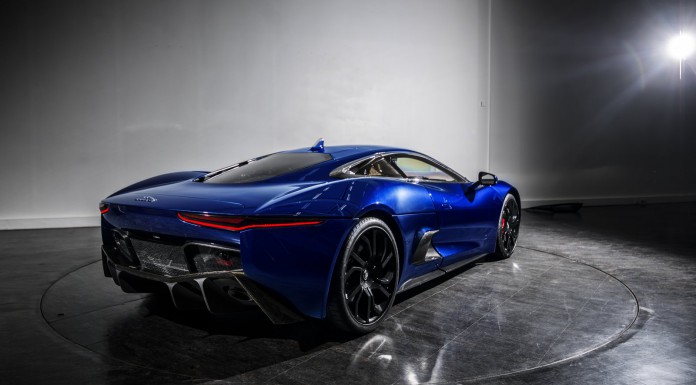










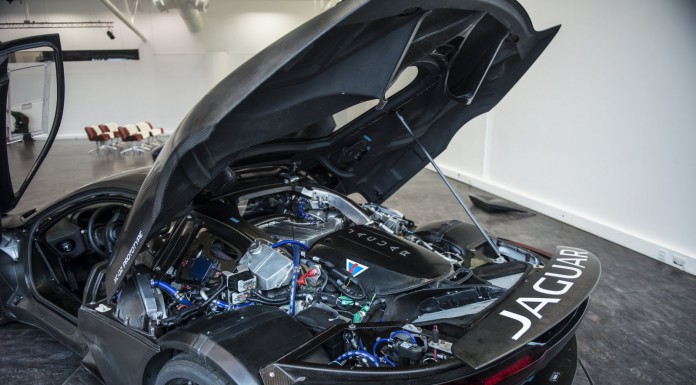
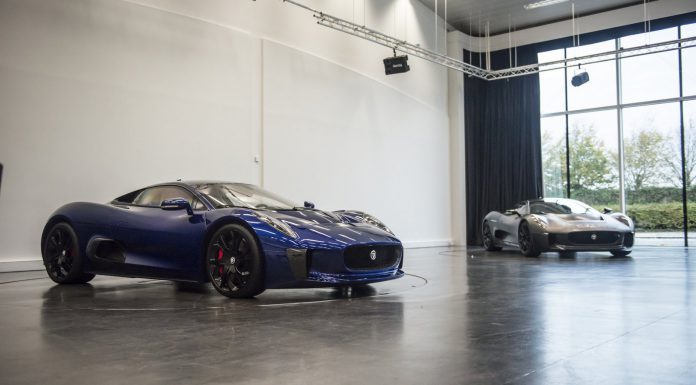
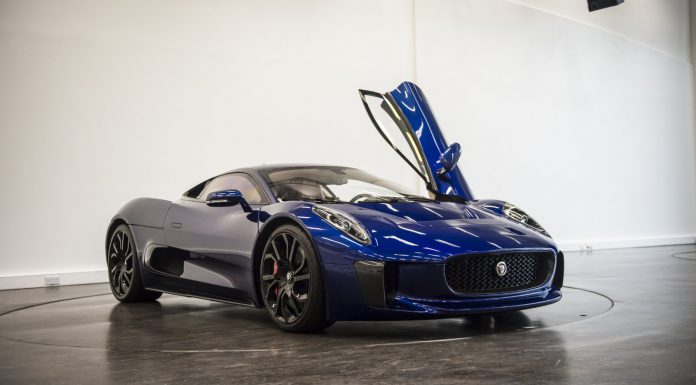
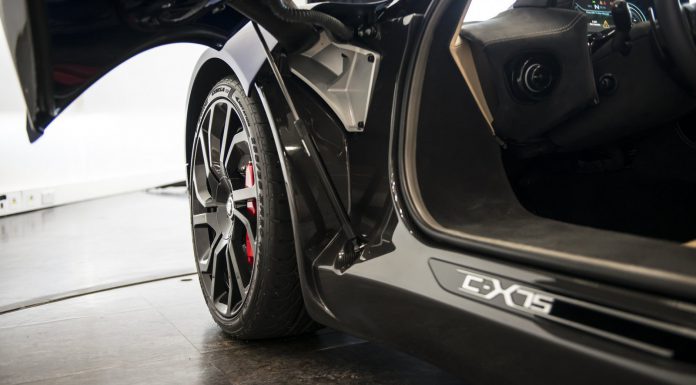
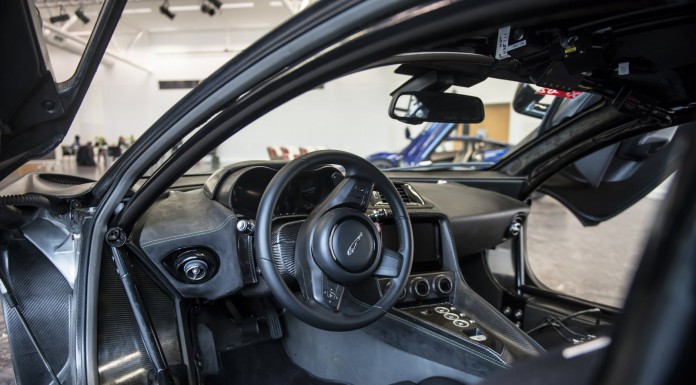




















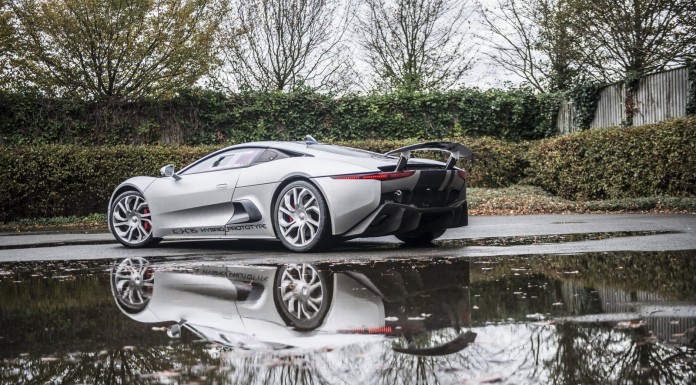
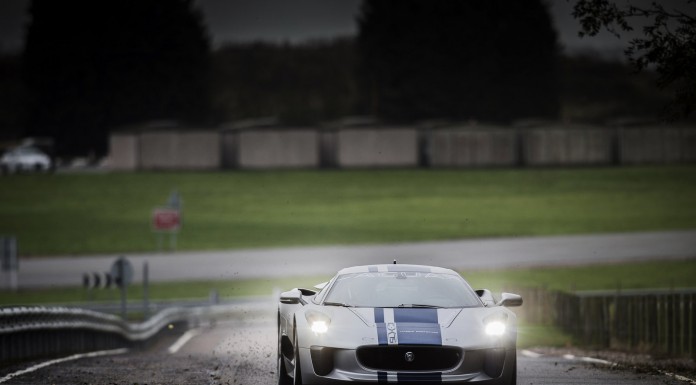






















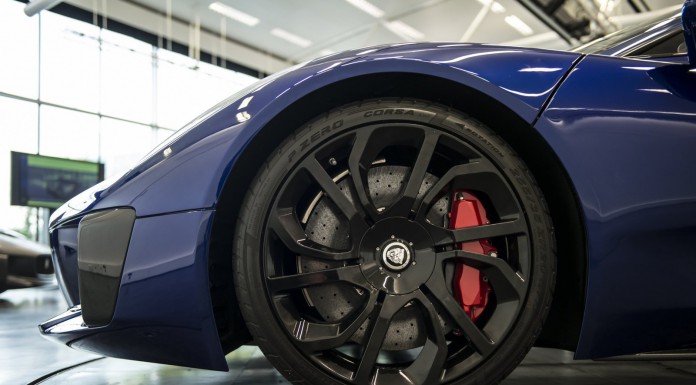
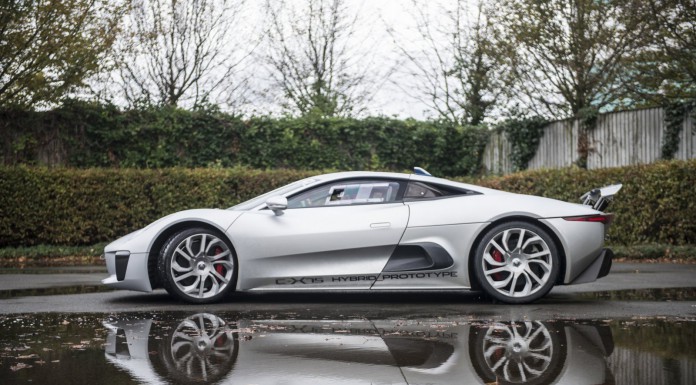
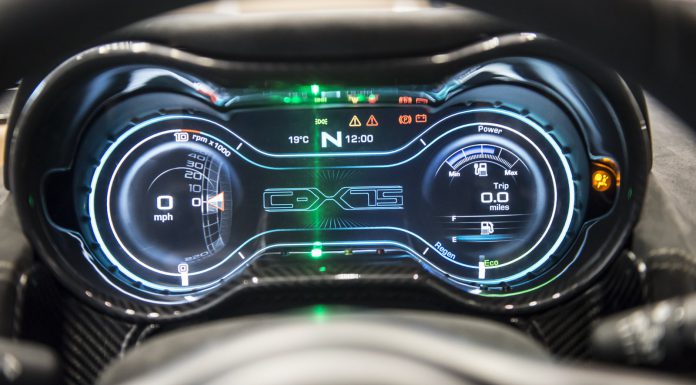
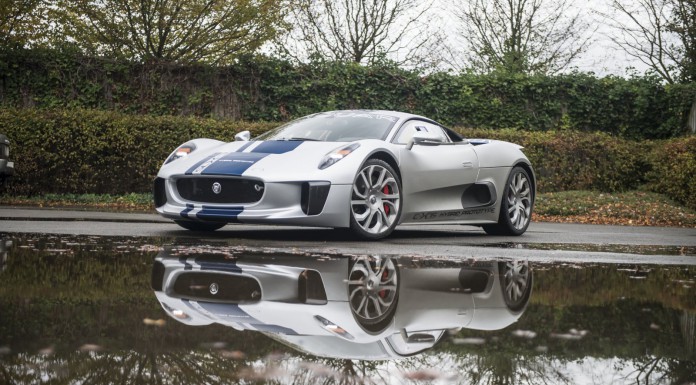











Love this car, coolest jag ever, never thought one could be cooler than a XJ220 but this is.
agree